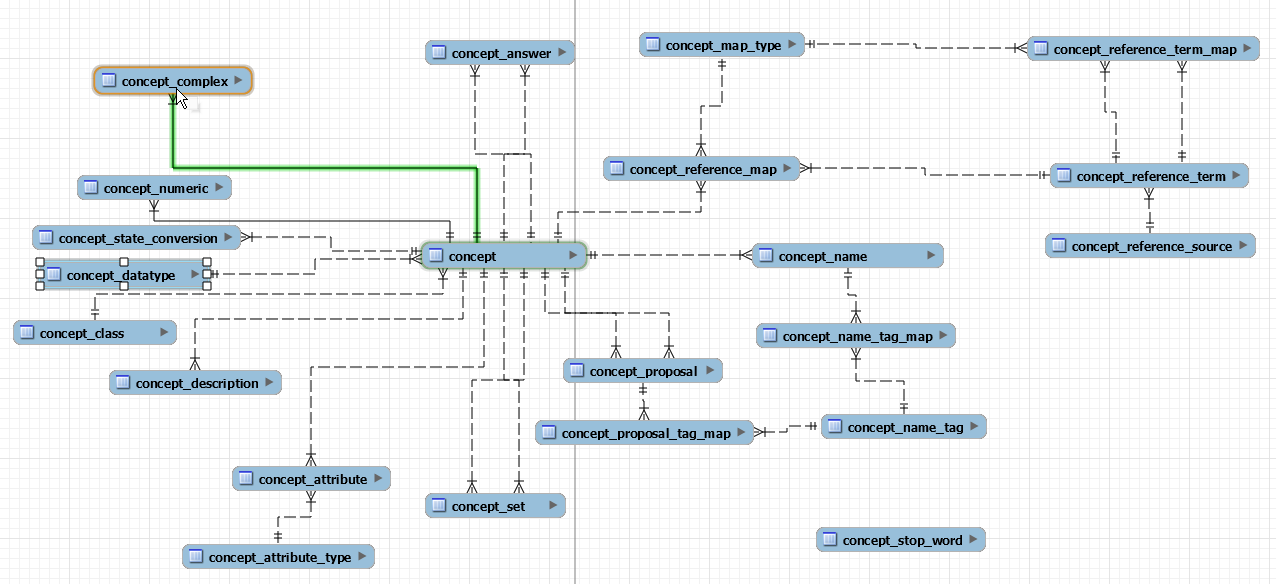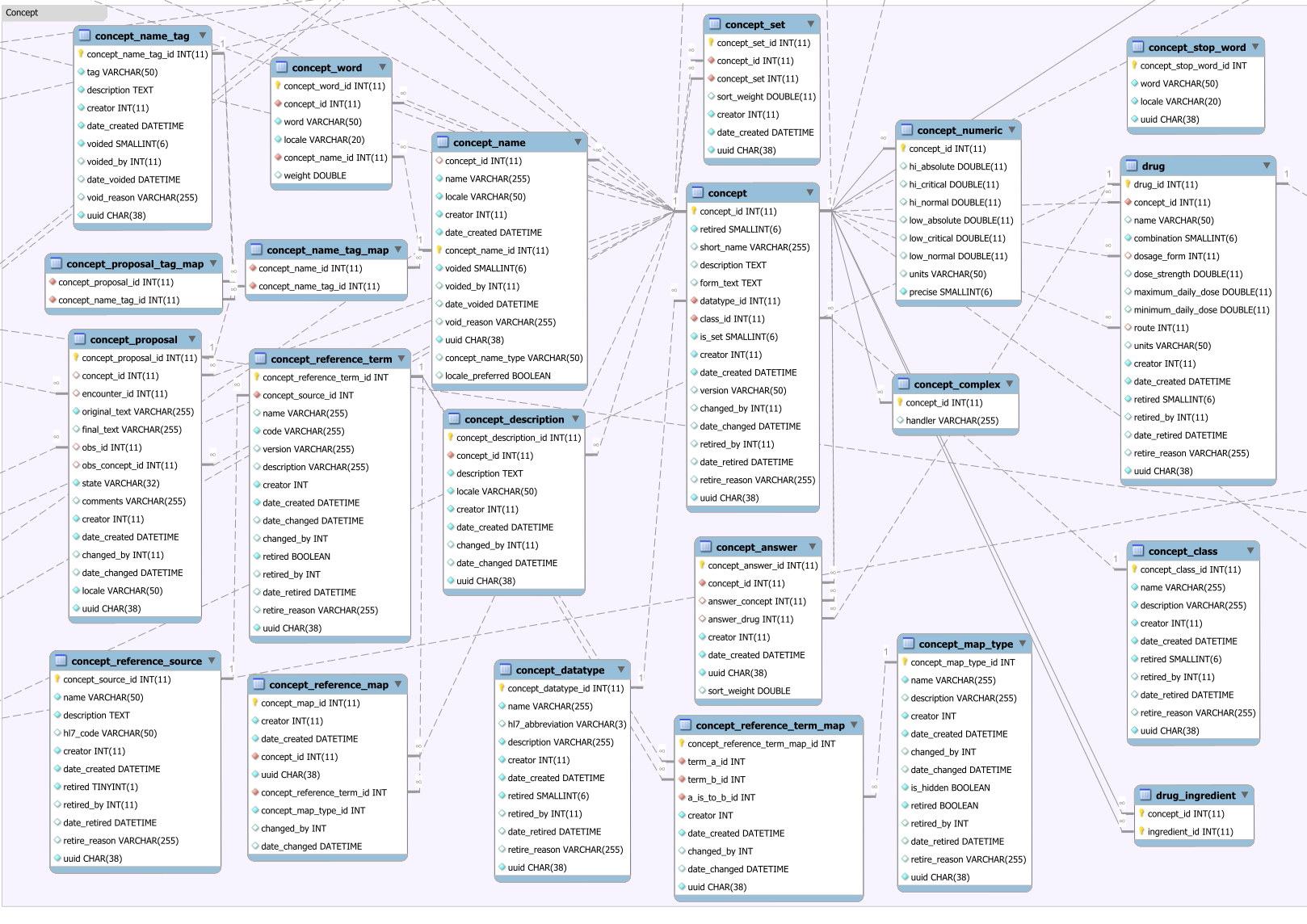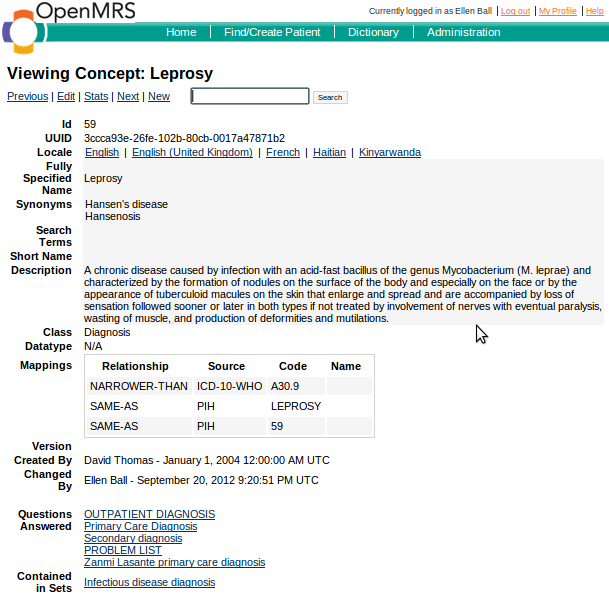Concept Data Model
Many new concept* tables were added to OpenMRS 1.9.
Concept schema diagram
Relationships between the tables
Relationships between the tables with column names
Relationship between concept tables and real example
Using the example of the Leprosy concept (see Figure 2), we'll describe some of the concept tables and how this concept is represented in the database. The concept_id is used to link the various tables (in most cases).
Table.Field | Data |
|---|---|
concept.class_id | Represented by concept_class 'Diagnosis' with concept_class_id = 4 |
concept.datatype_id | Represented by concept_datatype 'N/A' with concept_datatype_id = 4 |
concept_name.name | Leprosy where locale is 'en' |
concept_name.concept_name_type | FULLY_SPECIFIED for Leprosy; NULL for Hansen's disease and Hansenosis |
concept_name.locale_preferred | '1' for Leprosy, but '0' for Hansen's disease and Hansenosis |
concept_name.name | Lèpre where locale is 'fr' |
concept_answer.concept_id | The concept_id represents the question (Outpatient Diagnosis) |
concept_answer.answer_concept | The concept_id for Leprosy (59), which is an answer to the question (Outpatient Diagnosis) |
concept_description.description | The description text for each locale |
concept_reference_source.name | ICD-10-WHO (concept_source_id = 3), PIH (concept_source_id = 5) |
concept_map_type.name | SAME-AS (concept_map_type_id = 1), NARROWER-THAN (concept_map_type_id = 2) |
concept_reference_term.code | A30.9 where concept_source_id = 3 (ICD-10-WHO) |
concept_reference_map.concept_map_id | Magical glue which connects concept_id (ie. 59), concept_map_type (ie. NARROWER-THAN), concept_reference_term (ie. ICD-10-WHO A30.9) |
concept_word.word | Leprosy, Hansen's, disease, Hansenosis, Lèpre are all individual rows in this table |
More information on concept sources can be found here and here.


